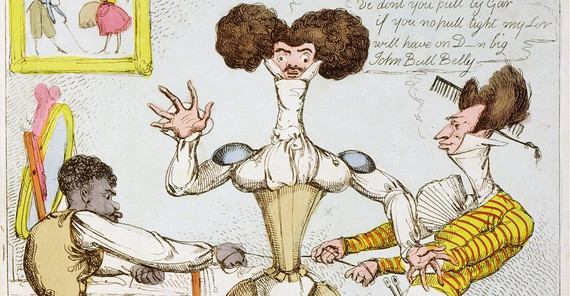Is a young male model wearing women’s fashion queer? What about unisex fashion? “Queerness is a practice that subverts identity standards, eludes definition, and thus creates ambiguity,” says literary scholar and fashion theoretician Professor Gertrud Lehnert. The term “queer” used to connote oddness; nowadays it encompasses all who deviate from gender and sexuality norms or are perceived as doing so.
“What is seen as queer in fashion is highly ephemeral,” Lehnert explains. When standards have been undermined, sooner or later queer fashion trends are coopted by the mainstream. Then you can buy the clothing that once represented an alternative concept: the leather pants worn by lesbians to express a subcultural affiliation or the earrings once used as a form of gay identification. It is almost impossible to decide if the reason for wearing this clothing is still the desire for politically driven deviance. “The fashion world tells us to be original,” says Lehnert. We achieve this originality by mixing diverse symbols. “This makes it extremely difficult to differentiate between queerness and originality in fashion.”
For over 25 years, Lehnert has been interested in whether fashion is queer. Her habilitation thesis dealt with a specific literary theme: women in men’s clothing. Conservative literary scholars did not regard it as an academic topic, although this form of masquerade is a recurring element of canonical literature – from William Shakespeare and Johann Wolfgang von Goethe to Virginia Woolf. The state of research on “queer fashion” is still rather modest. Current research increasingly concentrates on gay-lesbian fashion.
Queer fashion, however, has existed since the emergence of the bourgeoisie –for both men and women. The so-called “dandies” of the 18th and 19th centuries were considered effeminate, because they especially cultivated fashion. Many caricatures show the public perception of this alternative male image. Writer George Sand wore men’s clothing to demand social visibility. More and more women, such as Radclyffe Hall, appeared in men’s clothing in the 1920s, not least to make visible their lesbian identity.
Lehnert considers British haute couture designer Alexander McQueen (1969-2010) an avant-gardist of queer fashion. “His staging of fashion amalgamates the dead and the living, the beautiful and the ugly, resulting in a queerness of a different quality.” McQueen’s dresses of feathers or shells decorated with menacing thorns and stuffed birds create, in Lehnert’s view, a special aspect of queerness that is not primarily linked to gender. “His designs go beyond concepts of heteronormativity:”
The combination of the body with dead material plays a similar role in the “cyborg” discussion, which questions to what extent high-tech replacement parts in human bodies are ethically justifiable. Such “post-human” bodies may create new gender images. US American model Aimee Mullins, for example, wears lower leg prostheses. She is also creating a female image deviating from that of her profession. “Naturalness becomes visible as the construct it is,” says Lehnert. “This also is part of queerness: It makes so much possible.”
The fashion theoretician considers discussions on gender politically important. Many states still penalize sexuality that deviates from heteronormativity; Germany’s new shift to the political right also makes this issue quite explosive there.
Dealing with queerness remains a burning issue, both academically and politically. Lehnert is planning the seminar “Gender and Queer Theory” for the summer semester and an anthology on “Queer Fashion”. She also organized the workshop “Is Fashion Queer?” in November 2015, which focused on historical and current phenomena of the fashion world – from queer fashion bodies and queer shoes to queer exhibition formats.
Text: Jana Scholz, Translation: Susanne Voigt
Online-Editing: Agnes Bressa
Contact Us: onlineredaktionuuni-potsdampde

